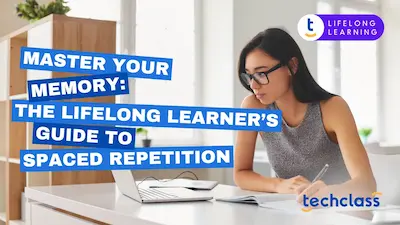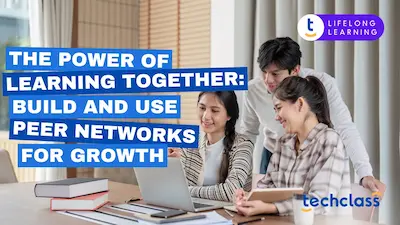
As we navigate continuous change and strive to remain adaptable and relevant, understanding how learning works can be a powerful advantage. Fortunately, neuroscience, the scientific study of the brain, offers us valuable insights into the mechanics of learning that are both practical and deeply empowering. This post explores how neuroscience informs effective learning strategies and how people can use these insights to make learning more meaningful, sustainable, and efficient throughout life.
At its core, learning isn't just about taking in information, it's a biological activity. Every time we encounter something new, our brains form and strengthen networks of neurons through electrical and chemical signals. This change is part of what scientists call neuroplasticity, the brain’s ability to reorganize itself by forming new connections. These neural networks become the infrastructure for our knowledge, skills, and habits.
Contrary to outdated myths, humans retain this neural plasticity throughout life. Your brain is not set in stone after a certain age; it continues to adapt as you learn, making lifelong learning not just possible but biologically supported.
Understanding how the brain learns means grasping the three main phases involved:
Encoding is how the brain initially registers information. But not all information gets in. Our brains are constantly filtering out irrelevant details, only allowing in what seems meaningful or worth attention. For effective encoding:
Storing knowledge isn’t about putting facts in a mental filing cabinet. Instead, it involves strengthening neural pathways over time.
Being able to recall information when you need it is a key part of learning.
Drawing from how the brain learns best, here are practical strategies people can use to enhance their learning journeys:
Instead of massed practice (cramming), spaced learning mimics how the brain naturally processes information. Revisit topics periodically to keep the neural connections alive and growing.
Mix related topics or skills during your study sessions. For example, alternate between writing, reading, and analyzing a concept rather than focusing on one area for a long stretch. This encourages flexible thinking and deeper understanding.
Engage with the material. Ask questions, take notes in your own words, apply concepts to real-life problems, or teach what you've learned to someone else. The more you do with the information, the stronger the neural web becomes.
Believe it or not, a bit of stress can be beneficial. Moderate levels of pressure help focus the mind and make learning more memorable. The key is to avoid chronic or overwhelming stress, which impairs memory and attention.
Information that’s meaningful is easier to remember. Try linking new knowledge to personal experiences, previous learning, or goals you care about. Your brain is more likely to hold onto information that feels relevant.
Forgetfulness isn’t failure, it’s part of how your brain organizes knowledge. Each time you forget and then remember again, the memory becomes more robust. Use forgetting as a tool by testing yourself after time has passed.
Some pervasive myths about the brain can hinder effective learning:
By letting go of these neuromyths and focusing on what neuroscience actually tells us, learners can make smarter, more strategic decisions about how they grow their knowledge and skills.
The beauty of neuroscience is that it confirms what lifelong learners already suspect: learning never ends, and our brains are built to keep growing. Whether you're learning to play an instrument, studying a new language, switching careers, or picking up a new hobby, the same principles apply.
Incorporating these neuroscience-backed strategies into your learning routine doesn’t require a classroom or a curriculum. It simply requires intention, awareness, and a bit of self-compassion.
You don’t have to be a neuroscientist to learn smarter. But by understanding how your brain works, you can become a more empowered learner, one who thrives not just in one-off lessons, but in the lifelong adventure of growing your mind.


